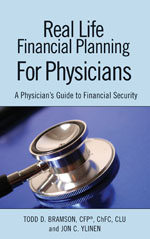Young surgeons face a host of tough decisions regarding both their present finances and their future financial management. In this column, I’ll discuss two of the more frequent areas for which younger surgeons seek advice.
Graduate Debt Options
Most physicians graduate with an average of $161,290 of medical school debt when entering their training. It can take many people until they retire to pay it all off. For folks in lower-paying specialties or working with employers who have a high supply and low demand for new attending positions, where competitive compensation is not a big factor, these loans present an even bigger burden as they take up a bigger percentage of the monthly budget.
The government has recognized this issue and even its potential as a deterrent to working in underserved areas for some specialists.
For those who are or have done their training and are still working at non-profit, 501(C)(3) or government agencies, there may be some relief available to you after paying your loans for 10 years. This program is called Public Service Loan Forgiveness. Here’s how to qualify:
•
You must pay 120 on-time payments under either the IBR (income based repayment), ICR (income contingent repayment) or the standard 10-year repayment program. Whatever is left after these 10 years is said to be forgiven.
•
Your loans must be Direct Stafford, Direct Consolidated, or Direct Grad Plus loans. Commercial lenders do not count. You are allowed to reconsolidate your old loan packages into this program to become eligible.
This program started in 2007 and the IBR program came out in 2009. So the first folks who will be eligible to receive some permanent relief will do so in 2017 and more likely in 2019.
The people who will benefit the most from this are those who pay under the IBR program while in training and then continue the 10-year repayment schedule for the remaining one to seven years as an attending at a qualified agency.
If you think there is a chance that you may be eligible or will qualify for some forgiveness, you should review the Employment Certification Form (
studentaid.ed.gov/sites/default/files/public-service-employment-certification-form.pdf). It is recommended that you re-submit this form annually.
A word of caution: The unknown here, as with any government program, is whether it will survive. I would not foresee the government pulling the rug out from those who have documented that they are counting on this program with the Employment Certification Form, but it could at some point stop accepting new applicants down the road.
Handling Retirement Funds
Recognizing that few of us in any field spend our entire career with the same employer, a second area of high interest from young surgeons is moving to a new position. From a financial perspective this usually triggers a whole new set of benefits and decisions to make. One of the biggest decisions that needs to be addressed is what to do with your old retirement account.
You generally have three options:
1)
Do nothing and leave it at your old employer’s retirement plan. This choice can limit your investment options. There can also be a challenge in terms of communicating about account changes; updates are usually harder to stay current on. If you make several job changes, it may also become tough to keep track of multiple accounts and asset allocation strategies for each set of investment options. You need to weigh each plan’s investment array, and you should consider costs. One employer plan, for example, may have access to low-cost classes of investment options, but have hidden fees as well.
2)
Roll your old account into your new employer retirement plan. Most employer plans allow you to do this. I would recommend using this option for smaller accounts where creating a separate IRA account would become more of a hassle from an ease-of-tracking and fee standpoint. See more on this below.
3)
Withdraw your funds. Generally, this option is not desirable for most people, as this action would result in income taxes due on the entire amount withdrawn, and if withdrawn before age 59 1/2, may be subject to a 10-percent penalty.
 |
This should not be considered as tax or legal advice. Please consult a tax or legal professional for information regarding your specific situation.
Mr. Ylinen is a financial advisor with North Star Resource Group. He co-authored the book Real Life Financial Planning for Physicians. He maintains a national comprehensive financial planning practice that caters almost exclusively to physicians. For information on this topic or any other financial matter, direct your inquiries to his website,
askjonylinen.com.






